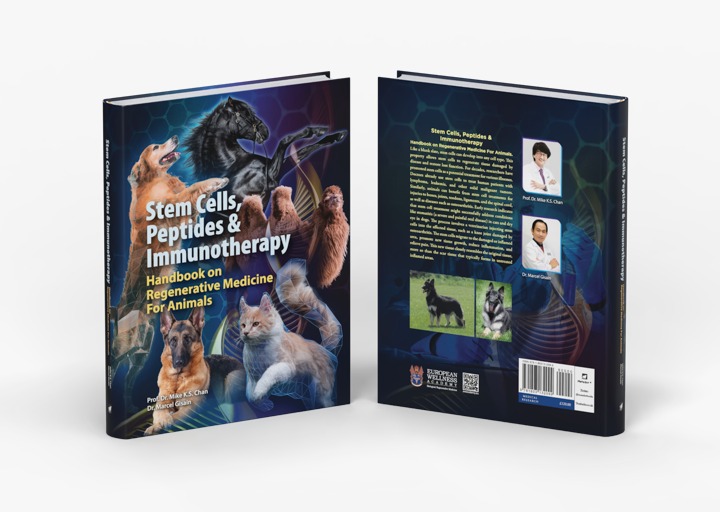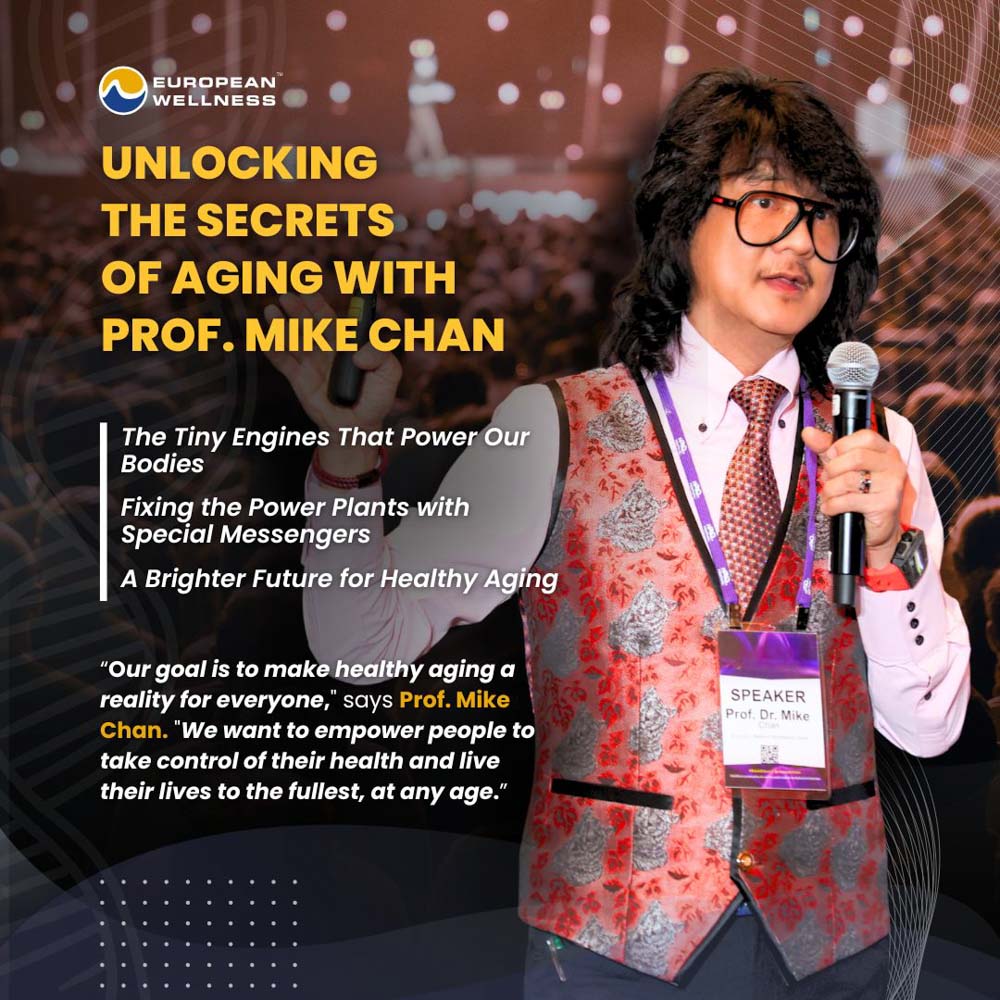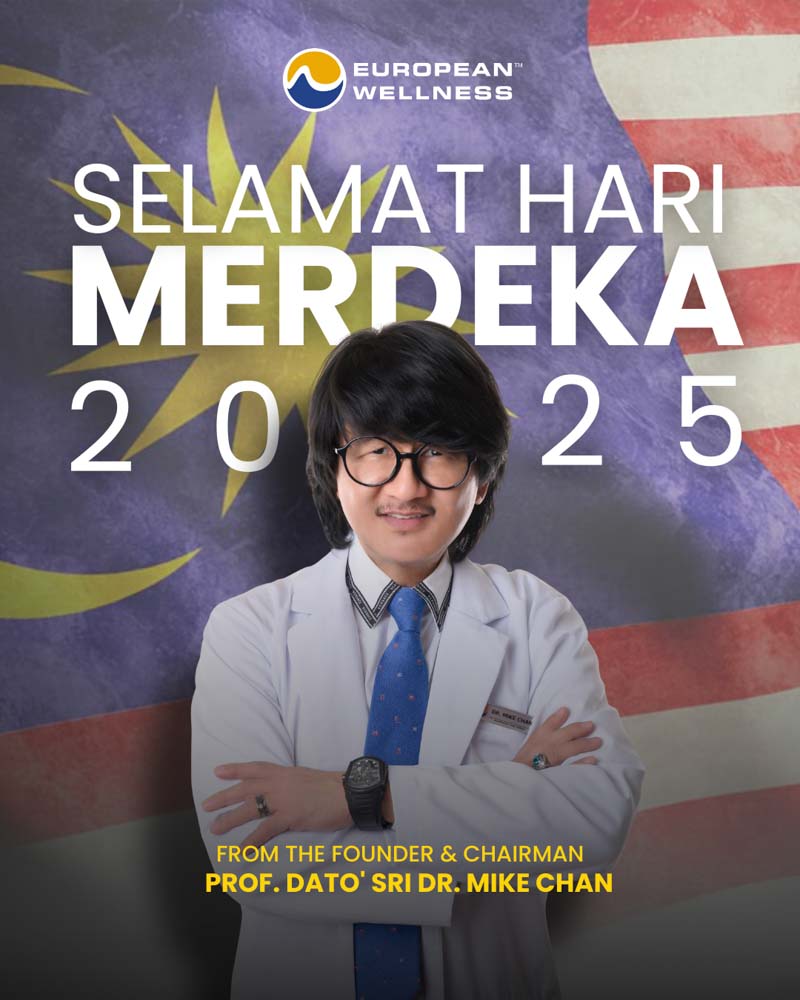From loyal dogs to playful cats and majestic horses, our animals are family. On this…
Mapping the Code of Life: Landmark Study Confirms Prof. Mike Chan’s Vision for Precision Cellular Medicine — Over 400 Human Cell Types Mapped
A landmark scientific breakthrough has mapped over 400 human cell types — offering powerful confirmation for the precision medicine philosophy Prof. Mike Chan has championed for decades: that real regenerative medicine demands matching the right cells to the right organs.
Since Robert Hooke’s 17th-century discovery of the “cell” under an early microscope, scientists have been captivated by the hidden structures of life. However, it is only now, through modern technology, that a full cellular atlas has emerged. Researchers have now classified over 400 distinct human cell types, a breakthrough that transforms our understanding of biology and regenerative medicine.
Using advanced single-cell RNA sequencing and bioinformatics, the research team produced the most comprehensive map of human cells to date. The Human Cytology Atlas reveals a much greater diversity and specialization of cells than previously known — reinforcing the regenerative protocols Prof. Mike Chan has championed for years.
“Our research spans the United States, United Kingdom, Germany, and Asia, contributing to a globally integrated regenerative strategy. We also operate a flagship center in Malaysia and numerous key centers across Asia, reaffirming our regional leadership,” said Prof. Mike Chan.
5 Key Findings from the Human Cytology Study — And Why It Matters
The mapping of the brain’s intricate cellular landscape fulfills a dream that began with the invention of the microscope, to truly understand the human body at its most fundamental level.
The detailed mapping of the brain’s cellular complexity brings to life a centuries-old scientific pursuit — to understand the human body at its most fundamental level, a journey that began with the invention of the microscope.
Today, researchers stress that effective treatment must be tailored to the unique cellular signature of each organ and tissue, highlighting the critical role of precision in shaping the next generation of regenerative therapies.
Key Points
- Historic Human Cell Atlas Completed: Science has definitively mapped the diversity and quantity of human cell types.
- Validation of Prof. Chan’s Protocols: Organ-and-cell-specific approaches are now scientifically confirmed.
- Transformative for Regenerative Medicine: The era of precision cellular medicine has officially begun — and Prof. Chan led the way.
- Classification of Over 400 Distinct Cell Types — Centuries of speculation have culminated in the definitive classification of 400+ distinct human cell types, highlighting the need for highly specific therapeutic targeting.
- Quantitative Mapping of Cells by Organ — Organ-specific cell counts enable regenerative therapies to be anatomically and functionally precise.
- Discovery of Rare Functional Subtypes — Previously hidden populations critical to repair and immunity were discovered, opening new therapeutic frontiers.
- Validation of Organ-Specific Cellular Identity — Each organ has evolved unique cellular signatures, reinforcing that organ-matched therapies are vital — a concept central to Prof. Chan’s approach.
- Recognition of Variable Regenerative Capacity — Understanding which cells regenerate better helps optimize therapy designs for chronic diseases and aging.
“While precision medicine has gained widespread recognition, I have always believed that true healing demands an even deeper understanding, to acknowledge that every stem cell is inherently unique.
“Each of the 400+ human cell types carries distinct molecular blueprints, comprising specific molecules, amino acid sequences, proteins, glycation rates, and transcription factors, all intricately tailored to the organs and tissues they sustain.
This principle has been the cornerstone of my work in developing targeted, brain-and organ-specific precursor stem cell bioregenerative therapies,” said Prof. Dr. Mike Chan.
“In order to treat, to regenerate every stem cell in the body, it must be an A1 for an A1, B6 for B6 and never an A stem cell for all kinds of diseases from A-Z. Nothing works from A-Z. It has to be specifically right, precise — because all the cells have different blueprints,” said Prof. Mike Chan, adding “this is the essence of precision in bioregenerative medicine and stem cells research.”
Each treatment must be cell-specific and region-specific. Effective regenerative therapy depends on matching the right cells to the right organs. Hepatocytes are used for liver repair, cardiomyocytes for the heart, and renal cells for the kidneys.
In the brain, precision is even more critical: frontal lobe neurons target Alzheimer’s, prefrontal cortex cells address autism, pineal gland cells help regulate sleep, hippocampal cells support memory and emotional balance, and substantia nigra neurons are vital in treating Parkinson’s disease.
Innovation Description
The Human Cell Atlas, developed by an international consortium of cytologists, molecular biologists, and data scientists, uses single-cell RNA sequencing, high-dimensional cytometry, and computational modeling to map every major human cell type and its function.
The research team used advanced genomic technologies to analyze millions of individual cells. By mapping gene expression patterns, they identified unique signatures for each cell type and traced their distribution across key organs like the liver, brain, heart, and kidneys.
This work fundamentally shifts how regenerative treatments must be designed: therapies can no longer be generalized but must be exquisitely tailored to each specific cell population, an approach European Wellness adopted early in its therapeutic philosophy.
These insights lay the foundation for highly targeted regenerative therapies — reinforcing the precision-based approach long advocated by Prof. Mike Chan and his team.
The Brain — A Complex Frontier for Precision Cellular Medicine
Understanding the Brain’s Cellular Complexity
The human brain remains one of the most intricate and fascinating organs ever studied. With its astonishing network of neurons, glial cells, and specialized regions, it orchestrates thought, emotion, memory, and physical coordination.
As Prof. Mike Chan has emphasized, “To heal the brain, we must understand every cell within it.” This principle lies at the heart of modern regenerative science: without a deep, cell-specific understanding of the brain’s architecture, effective healing remains out of reach. Among all human organs, the brain stands as a critical area where the need for organ-specific, cell-specific precision is paramount.
The Human Cytology Atlas Maps the Brain’s Diversity
The groundbreaking Human Cytology Atlas, authored by Prof. Mike Chan and published by Genesis Publications, used single-cell RNA sequencing and advanced bioinformatics to map cellular diversity throughout the body — including the brain.
The Atlas reveals a greater range of cellular specialization than previously imagined. Within the brain alone, researchers uncovered unique “signatures” that define specific neural populations, quantifying their distribution across critical regions like the frontal lobe, prefrontal cortex, hippocampus, pineal gland, and substantia nigra. This data provides an unprecedented foundation for designing highly targeted regenerative therapies for neurological diseases.
Targeted Precision: Brain-Specific Applications in Regenerative Medicine
Prof. Mike Chan’s long-standing belief in organ-and-cell specific regenerative therapy is particularly vital when treating the brain. Effective treatment requires precisely matching the therapy to the unique cellular makeup of each organ — ensuring that each region receives targeted intervention based on its distinct cell types.
Examples from the Human Cytology Atlas and European Wellness protocols highlight this targeted approach:
- Frontal lobe neurons for supporting regeneration in Alzheimer’s disease.
- Prefrontal cortex cells to address developmental challenges like autism spectrum disorder.
- Pineal gland cells to restore circadian rhythms in sleep disorders.
- Hippocampus cells to enhance memory retention and emotional stability.
- Substantia nigra neurons to combat neurodegeneration in Parkinson’s disease.
These strategies are built on the core principle that generic stem cell therapy is insufficient for complex organs like the brain; only organ-matched, cell-specific interventions can achieve real, lasting healing.
Validation of the Brain-Targeted Approach
“Every cell has a different blueprint and the precision of matching is the key to success,” said Prof. Mike Chan
By defining the brain’s many distinct cell types and their specialized functions, the Atlas confirms that successful neuroregenerative therapies must target the correct cells within the correct regions. It is no longer sufficient to apply broad-spectrum solutions — modern medicine demands exact matches between therapy and cellular architecture.
This scientific validation supports the European Wellness practice of using organ-specific precursor stem cells for protocols addressing neurodegeneration, cognitive decline, and brain aging.
The Future of Brain Health Through Cellular Precision
The Human Cytology Atlas marks a revolution in our approach to brain health. For the first time, the cellular complexity of the brain has been scientifically charted, enabling therapies that are no longer hopeful guesses but precision-guided interventions.
As science advances, it is clear that treatments for brain-related conditions must be exquisitely tailored to specific cellular populations.
This precision approach represents the essential roadmap for the future of brain healing, offering new hope for patients facing Alzheimer’s, Parkinson’s, autism, memory disorders, and beyond.
European Wellness Disease Treatment Protocol
European Wellness Biomedical Group’s regenerative programs, already implement organ-specific precursor stem cell therapy. Each protocol is crafted based on the patient’s unique cellular architecture, with specific precursor cells selected for conditions like liver disease, heart failure, neurodegeneration, and more.
“Our work at European Wellness has always respected the divine complexity of human biology. With this breakthrough in cytological science, it is now undeniable that organ-specific, cell-specific precision is essential for true regenerative success.” — Prof. Mike Chan.
This marks a revolution in regenerative medicine, a decisive shift from outdated “one-size-fits-all” solutions. Instead, treatments must now be tailored to the unique cellular signatures of each organ and tissue, which matches cell for cell, region for region — a philosophy long championed by Prof. Mike Chan and European Wellness, now validated as the roadmap for the future of medicine.
Explore our publication on human cytology:
Human Cytology: Classification and Quantitative Cell Landscape with Numbers, Types and Functional Diversity
https://european-wellness.eu/publications/human-cytology-classification-and-quantitative/
Exploring the Complexity of the Human Brain: Cell Types, Numbers, and Lobar Functions
https://european-wellness.eu/events/our-brain-limitless-potential/
Article Source
Human Cytology: Classification and Quantitative Cell Landscape with Numbers, Types and Functional Diversity
Follow European Wellness Academy:


